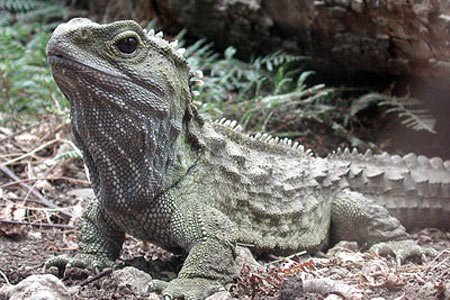Home Tags Posts tagged with "New Zealand"
New Zealand
Marmite has returned to New Zealand supermarkets for the first time in over a year, after shortages caused by the Christchurch quake.
The February 2011 quake damaged the only factory in the country that produces Marmite, forcing it to close.
Stocks then dwindled, leading to shortages dubbed “Marmageddon” by media, from early 2012.
The factory has since reopened, with food company Sanitarium thanking consumers for “not freaking out”.
Sanitarium Marmite uses a different recipe than the English version of Marmite, manufactured by a different company.
It was first brought to New Zealand in the 1900s but the country came up with its own version, which has its own distinctive taste. Australia also has a similar product called Vegemite.

Marmite has returned to New Zealand supermarkets for the first time in over a year, after shortages caused by the Christchurch quake
The shortage led to complaints from many New Zealanders, including Prime Minister John Key.
“You’ve rationed, you’ve scraped, you’ve survived Marmaggedon – and now the wait is over!” Sanitarium said on its website.
“Thanks for not freaking out and for waiting patiently for the black gold’s return.”
The Marmite factory was scheduled to re-open by middle of last year but faced unexpected delays.
Even with its return, some supermarkets in New Zealand were rationing supplies to two jars per customer in the face of high demand.
But customers said they were happy with the spread’s return.
“I’ve tried the alternatives but they’re just not the same, so I’ve had to have jam or peanut butter on my toast,” consumer Robyn Lonergan told Agence-France Presse news agency.
[youtube vO4H8vt8QRU]
A New Zealand school girl repeatedly mistaken for missing Madeleine McCann has given Scotland Yard a DNA sample to confirm that she is not the youngster.
She has been consistently pointed out as the youngster, who went missing in May 2007 while on holiday with her parents and twin siblings.
The New Zealand girl bears a striking resemblance to Madeleine McCann, and is believed to have a mark on her right eye similar to the distinctive one on the British girl’s iris.
Police launched a five-day investigation in January when a Queenstown retailer became suspicious of a man and the young girl.
The sample was requested following a reported sighting of Madeleine McCann on New Year’s Eve.
The DNA sample is a conclusive way of proving her identity, according to Detective Senior Sergeant Kallum Croudis of Dunedin police, News.com.au reported.
A Metropolitan Police spokeswoman said: “This is not a line of inquiry, but just to corroborate what police in New Zealand are saying we have requested DNA.”

A New Zealand school girl repeatedly mistaken for missing Madeleine McCann has given Scotland Yard a DNA sample to confirm that she is not the youngster
Madeleine McCann was nearly four when she vanished from her family’s Portuguese holiday apartment in Praia da Luz as her parents, Gerry and Kate, ate dinner at a nearby tapas restaurant with friends.
The case led to a worldwide search amidst fears the girl had been snatched, but despite a number of leads coming to light no trace of Madeleine McCann has every been conclusively found.
Since the disappearance, officials have from time to time issued digitally altered images showing what she might look like over the passage of time.
Portuguese police stopped formally investigating the case in July 2008, but Madeleine McCann’s family have never given up their quest to track down their missing daughter.
Celebrations are being held around the world to mark the New Year, with the city of Auckland in New Zealand holding the first major events of 2013.
Crowds began to gather on Monday evening in Sydney in anticipation of the city’s famous firework display.
Big shows are also planned in many other cities globally.
Celebrations will also be held for the first time in Burma, where large public gatherings were banned by its previous military rulers.
Tens of thousands are expected to attend the celebrations in Rangoon, which will feature a fireworks display and performances by Burmese entertainers.
Reports say the festivities will be broadcast live on Burmese television.
The celebration is seen as the latest sign of the country’s liberalization under its military-backed civilian government.

Celebrations are being held around the world to mark the New Year, with the city of Auckland in New Zealand holding the first major events of 2013
However, there is a subdued atmosphere in the Indian capital Delhi, following the death last week of a 23-year-old victim of a brutal gang rape.
The army has cancelled its celebrations across the country, as have the governments in the states of Punjab and Haryana.
Thousands of residents and clubs have also called off New Year celebrations. Protests over the case continued on Monday.
Later on, festivities will be held in European cities including Moscow, Paris and London.
More than two million people are expected to be on Rio de Janeiro’s Copacabana beach.
New York will mark the New Year with the traditional New Year’s Eve countdown and ball drop over Times Square.
[youtube 30krMx1p9Yo]
[youtube v9IA6ygHYpA]
[youtube b7VlFTQURFA]
New Zealand’s Mount Tongariro has erupted again, having rumbled back to life in August after more than a century of quiet.
The volcano, in the North Island, sent a column of ash at least 2 km (1.25 miles) into the air, scientists said.
There were no immediate reports of injuries, but hikers and a group of school children were being moved out of the national park.
Before the August activity, the 1,978m (6,490 ft) peak last erupted in 1897.
The latest eruption happened at around 13:25 local time and lasted for around five minutes, experts said.
A release from the Ministry of Civil Defence said “minor volcanic activity” was occurring at the Tongariro – Te Maari craters and “could be hazardous in the immediate vicinity of the craters”.

New Zealand’s Mount Tongariro has erupted again, having rumbled back to life in August after more than a century of quiet
“Light volcanic ash fall can be anticipated downwind of Tongariro,” it said, potentially affecting the Waikato, Hawkes Bay, Gisborne and Bay of Plenty areas.
Air New Zealand said it did not expect delays or cancellations as a result of the eruption, based on current information.
It was “working closely with the relevant authorities to keep up to date with ash movement and forecasts” and would adjust flight routes if necessary.
[youtube rc3FrX1jtsg]
Tuatara, a reptile living in New Zealand, has a unique way of chewing its food, say scientists who have studied its jaws in detail.
This beak-headed reptile uses a “steak-knife sawing motion” as it chews.
This could help explain how the species has continued to adapt to a changing world – and changes in available prey – over more than 200 million years.
A computer model of the tuatara, recreating its jaws as it munched on prey, has revealed that it chews like no other land animal.
This seems to allow it to “slice up” food that is too big for its mouth.

Tuatara, a reptile living in New Zealand, has a unique way of chewing its food, say scientists who have studied its jaws in detail
In their paper in the journal The Anatomical Record, the researchers describe how the teeth of the tuatara’s lower jaw close between two upper rows of teeth “before sliding forward to slice food apart like a draw-cut saw”.
Lead researcher Marc Jones from University College London said this was very unlike any living lizard or snake, which used “more of a simple opening and closing” motion.
The UK-based researchers were able to observe and film chewing tuataras at Chester Zoo.
Dr. Marc Jones and his colleagues from the universities of Hull and York then used this footage to accurately digitise and simulate the creature’s characteristic chomp.
He said that the “slicing jaws” of the tuatara allowed it to eat a wide range of prey including beetles, spiders, crickets and small lizards.
But he added that this study helped to explain some rather gruesome discoveries in the reptile’s habitat.
“People have described finding seabirds with their heads sawn off,” said Dr. Marc Jones.
“Tuatara will tend to go for hatchlings if they can, but as far as I can make out [they] do sometimes take small adults.
“[We think] they change their diet seasonally – eating lots more seabirds during the summer.”
Although the tuatara looks very much like a lizard, it actually belongs to a group of animals commonly known as beak heads, or Rhynchocephalia in the formal terminology.
The reptile, found wild only in New Zealand, is the last surviving species of its group. Its relatives died out more than 200 million years ago.
At that time, the creatures were spread throughout the globe; scientists have found some the fossilised remains of the tuatara’s extinct relatives in the UK.
It is not entirely clear how and why the rest of these ancient reptiles became extinct, but the tuatara’s ability to saw up its food could be a secret to its continued survival.
[youtube RyNivqawzHY]
 Prev12Page 2 of 2
Prev12Page 2 of 2





